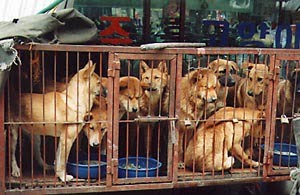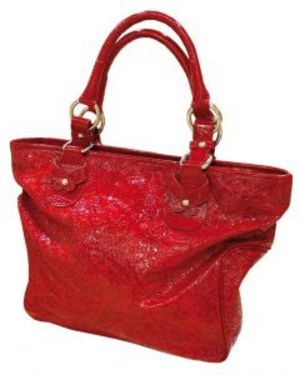Back in 1999 or there-about, the United States Air Force sent me to the Republic of South Korea. During my 12 months in country — as time permitted — I tried to learn as much of the local culture as possible: I traveled, taught English, shopped, and tried to learn a phrase or two. But far and away one of my most unforgettable memories is when a Korean liaison officer and his family invited me to eat Kagogi (kaa-go-ghee) — better known as dog meat.
Koreans have been eating Kagogi long before McDonalds ever set foot in the country, I know that much. Some say that rabid famine at the turn of the century is what spurred Koreans to start eating dog. Whatever the reason, they liked it, and continue to eat it. You may or may not agree with it and that’s fine. Personally, I could never quite collar up to the fact that “man’s best friend” was also a best-selling staple at virtually every Korean market I ever went to. In this case, I knew enough not to offend my host and turn down an invitation to dinner.
But first, before we sit down to eat, let me toss a few things out at you….
The rest of the Western world does not like the fact that South Korea, China, Japan and several other countries eat dog meat. That is because for the rest of the Western world we consider the dog to be our friend. Just like we consider horses to be our friend. That is why we don’t promote eating horse meat. Cows, pigs and chickens apparently are not our friends because we eat them.
In Korea, the concept of a dog as a pet is a relatively new one. “Food-dogs” as they are called, are not pets and they have no names. Food-dogs are bred in farms, just like pigs, cows, lambs, chickens and other animals that we do not consider to be our friends.
More than one once I was told that puppies are the “dog of choice” because the meat is so tender. This is similar to the tender beef of calves being more prized than that of adult cows. The dogs I saw at most markets — apart from the fact that they were already dead — seemed to be a type of mastiff. A mix between a rottweiler and a pit-bull. You know — an dog with some meat on its bones. I never saw puppies, never saw stacks of cages with howling canines who look like they’re on death row. I’m not saying that doesn’t exist, I’m just saying I never saw it.
My Korean friend Mr. Nam (come to think of it I never did learn his first name — to me he was always just “Mr. Nam”) explained to me that Kagogi was considered a delicacy. A dish served up at special occasions. He also made a fist and stuck his arm straight out and told me, “…and kagogi is very good for men…” I had heard that somewhere before: that dog meat is considered an aphrodisiac of sorts in some countries. Just like the shark fins, bull balls or monkey brains.
Mr. Nam told me that you could go to the market and purchase dog meat. But because the demand was high, it was important to order in advance. Mr. Nam’s wife had in fact gone to the market a week earlier to order the meat, so it would be available on the day she was preparing dinner. According to an article on Slate.com the South Korean dog meat industry reportedly involves about 1 million dogs, 6,000 restaurants, and 10 percent of the population.
Now maybe I was stationed in Korea during an off-year. But during the entire time I was there — and I made it a point to get out and travel as much as possible — I never saw any protesters campaigning against cruelty to animals, never saw hordes of stray dogs being cut down or kidnapped. French actress-turned-activist Brigitte Bardot made a big stink about Korea’s dog meat industry prior to the 2002 Fifa World cup – saying it was bad for Korea’s image, but I don’t believe that had much of an impact. Norwegians didn’t stop eating reindeer during the 1994 Lillehammer Olympics. American restaurants didn’t stop serving bull testicles during the 1996 Atlanta Olympics. And come to think of it, no one forced Spain to outlaw cat stew during the 1982 World Cup either.
But I digress.
So there I was: in Mr. Nam’s tidy-but-sparsely furnished apartment, sitting down with him and his family cross-legged on the floor at a large table. I was told that Nam’s wife had been “in the kitchen all day preparing dinner.” Up to then I wasn’t sure how many ways you could prepare Kagogi but I soon found out:
We started off with Kagogibroth, and then proceeded to chunks of kagogi wrapped in cabbage, we ate kagogi stew and topped everything off with Kagogi legs. (I thought they were chicken wings until I got a close look at them). I did my best to dig in and enjoy — never letting the big smile on face fade away for fear of disappointing my host.
All things considered it wasn’t that bad. You ever smell a wet dog? That’s what kagogi smelled like to me. But maybe I was imaging things. Anyway — hey it was dinner. We could have substituted dog for chicken or beef and wouldn’t have changed anything. We ate and joked and talked like any other family does when it eats a meal.
I’m tempted to tell you that after I ate dog meat I had this strange urge to pee on a fire hydrant, but that’s not true. However, I did go through a brief period where I found myself sticking my nose in my asses of total strangers.
I’m sure it’s just a coincidence.
During the last 10 years more and more animal rights leagues have stepped up to the plate in defense of dogs being used as a main meal. Is it actually changing anything? I’m not so sure. In South Korea there is currently several laws in place that — while the laws don’t exactly make the sale of dog meat illegal — they do make the method of euthanizing canines a lot more…palatable.



